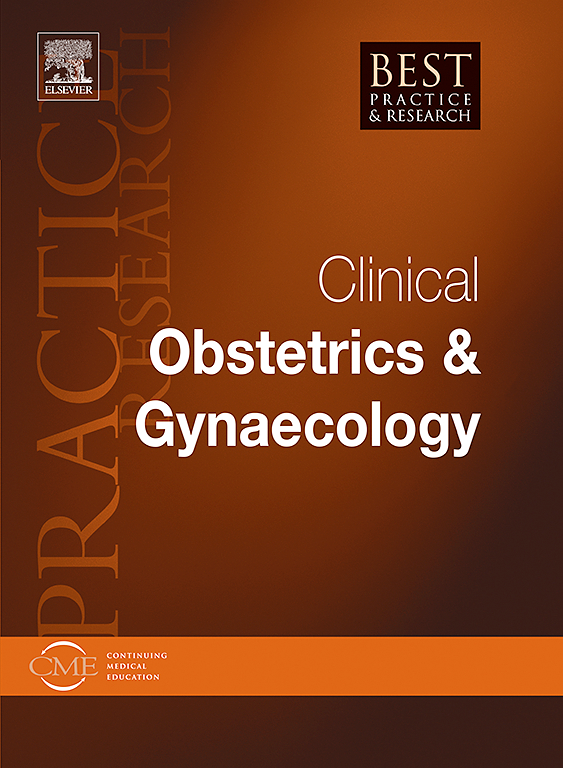妊娠中期超声(异常)
IF 4.1
2区 医学
Q1 OBSTETRICS & GYNECOLOGY
Best Practice & Research Clinical Obstetrics & Gynaecology
Pub Date : 2025-06-17
DOI:10.1016/j.bpobgyn.2025.102628
引用次数: 0
摘要
妊娠中期超声是产前护理的重要工具,通常在妊娠18至24周之间进行,以评估胎儿解剖、生长和中期筛查。这篇文章提供了最佳实践的全面概述和指导方针,执行这项检查,重点是检测胎儿异常。超声通过测量生物特征参数来评估关键结构和评估胎儿生长,这对估计胎儿体重至关重要。此外,本文还讨论了胎盘评估、羊水水平测量的重要性,以及通过宫颈长度测量早产的风险。讨论了影响扫描精度的因素,如操作人员的技能、设备的质量和产妇的条件(如肥胖)。文章还讨论了该程序的局限性,包括检测的可变性。尽管存在这些挑战,妊娠中期超声仍然是一种有价值的筛查和诊断工具,为妊娠管理提供重要信息,特别是在高危病例中。未来的发展方向包括改进成像技术,整合人工智能进行异常检测,以及标准化超声协议,以提高诊断准确性并确保一致的产前护理。本文章由计算机程序翻译,如有差异,请以英文原文为准。
2nd trimester ultrasound (anomaly)
The second-trimester ultrasound is a crucial tool in prenatal care, typically conducted between 18 and 24 weeks of gestation to evaluate fetal anatomy, growth, and mid-trimester screening. This article provides a comprehensive overview of the best practices and guidelines for performing this examination, with a focus on detecting fetal anomalies.
The ultrasound assesses key structures and evaluates fetal growth by measuring biometric parameters, which are essential for estimating fetal weight. Additionally, the article discusses the importance of placental evaluation, amniotic fluid levels measurement, and the risk of preterm birth through cervical length measurements. Factors that can affect the accuracy of the scan, such as the skill of the operator, the quality of the equipment, and maternal conditions such as obesity, are discussed. The article also addresses the limitations of the procedure, including variability in detection.
Despite these challenges, the second-trimester ultrasound remains a valuable screening and diagnostic tool, providing essential information for managing pregnancies, especially in high-risk cases. Future directions include improving imaging technology, integrating artificial intelligence for anomaly detection, and standardizing ultrasound protocols to enhance diagnostic accuracy and ensure consistent prenatal care.
求助全文
通过发布文献求助,成功后即可免费获取论文全文。
去求助
来源期刊
CiteScore
9.40
自引率
1.80%
发文量
113
审稿时长
54 days
期刊介绍:
In practical paperback format, each 200 page topic-based issue of Best Practice & Research Clinical Obstetrics & Gynaecology will provide a comprehensive review of current clinical practice and thinking within the specialties of obstetrics and gynaecology.
All chapters take the form of practical, evidence-based reviews that seek to address key clinical issues of diagnosis, treatment and patient management.
Each issue follows a problem-orientated approach that focuses on the key questions to be addressed, clearly defining what is known and not known. Management will be described in practical terms so that it can be applied to the individual patient.

 求助内容:
求助内容: 应助结果提醒方式:
应助结果提醒方式:


